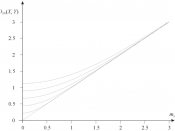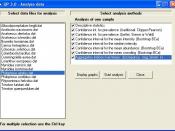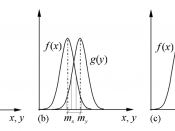OUTLINE of Chapter 1
Elementary Statistics: A Brief Version
(A. Bluman 3rd Ed., 2003)
Demonstrate knowledge of statistical terms.
Differentiate between the two branches of statistics.
Identify types of data.
Identify the measurement level for each variable.
Identify the four basic sampling techniques.
Explain the difference between an observational and an experimental study.
Explain how statistics can be used and misused.
Explain the importance of computers and calculators in statistics.
Statistics is the science of conducting studies to collect, organize, summarize, analyze, and draw conclusions from data.
Descriptive statistics consists of the collection, organization, summarization, and presentation of data.
Inferential statistics consists of generalizing from samples to populations, performing estimations hypothesis testing, determining relationships among variables, and making predictions.
Probability is the chance of an event occurring.
A population consists of all subjects that are being studied.
A sample is a group of subjects selected from a population.
In order to gain knowledge about seemingly haphazard events, statisticians collect information for variables that describe the events.
A variable is a characteristic or attribute that can assume different values.
Data are the values that variables can assume.
A data set is a collection of data values.
Each value in the data set is called a data value or a datum.
Random variables have values that are determined by chance.
Insurance companies set their rates based on random variables. Over a long period of time, the rate of the occurrence of accidents tends to be constant.
Qualitative variables can be placed into distinct categories according to some characteristic or attribute.
Quantitative variables are numerical in nature and can be ordered or ranked.
Variables and Types of Data (cont'd.)
Quantitative variables can be further classified into two groups.
Discrete variables assume values that can be counted.
Continuous variables can assume all values between...



Elementary Statistics
This essay really helped me answer questions for class. I think it's an excellent essay!
2 out of 2 people found this comment useful.